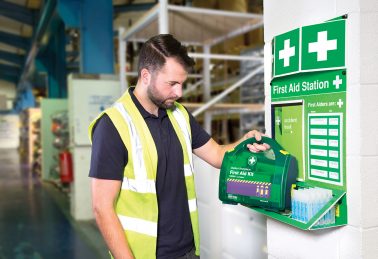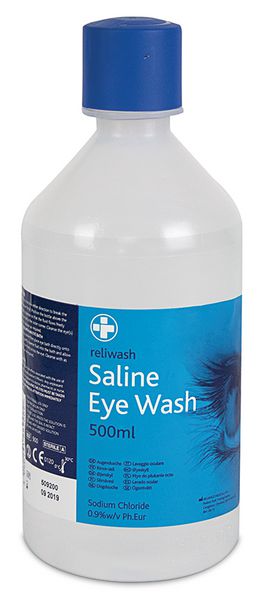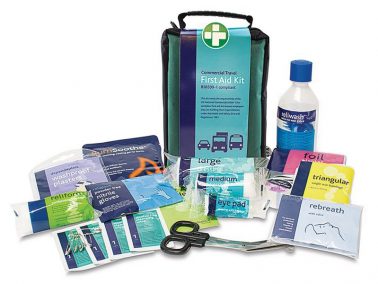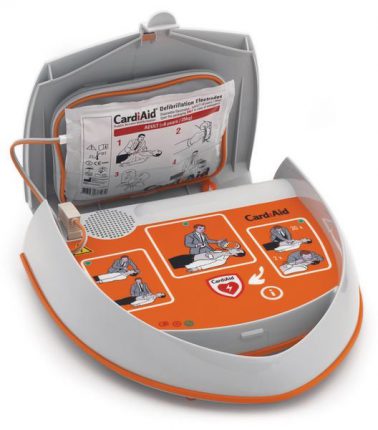First Aid – Employer’s Duty to Provide Adequate Facilities
 Employers must provide the equipment, facilities and materials that will be needed to ensure an appropriate level of cover is available to employees at all relevant times. First aid equipment boxes and facilities must be readily identifiable; all first aid containers should be marked with a white cross on a green background. As a minimum, one first aid container with sufficient quantity of first aid materials must be made available for each worksite. Larger premises will require more than one container.
Employers must provide the equipment, facilities and materials that will be needed to ensure an appropriate level of cover is available to employees at all relevant times. First aid equipment boxes and facilities must be readily identifiable; all first aid containers should be marked with a white cross on a green background. As a minimum, one first aid container with sufficient quantity of first aid materials must be made available for each worksite. Larger premises will require more than one container.
First Aid Needs Assessment
The level of first aid provision depends on workplace circumstances. No fixed level exists, but each employer needs to assess what facilities and personnel are appropriate. Employers may delegate the responsibility for carrying out the assessment and advising on first aid to an occupational health service.
When assessing what is adequate and appropriate, the employer must take account of a number of factors:
- Number of first aid personnel needed, including consideration of annual leave and other absences
- Workplace hazards and risks – higher risk workplaces will need a higher trained and possibly more specialised type of first aid depending on the types of hazards e.g. chemicals
- Size of the Organisation
- Organisation’s History of Accidents
- Nature and Distribution of Workforce
- Remoteness of Site from Emergency Medical Services
- Needs of Travelling and Remote and Lone Workers
- Employees Working on Shared or Multi-occupancy Sites
- Employment Agency Employees
- Whether non-employees e.g. members of the public, customers or service users will be provided with first aid coverage
 Siting and Contents of First Aid Containers
Siting and Contents of First Aid Containers
First aid containers should be easily accessible and, where possible, near hand-washing facilities. The containers should be used only for first aid equipment. Tablets and medications must not be kept in them. First aid materials should be protected from damp and dust. Read our latest article on Changes to Workplace First Aid Kits.
Periodic Inspection and Replenishment
Frequent inspections of the first aid kits should be carried out. Stocks should be replenished as soon as possible after use, and ample back-up supplies should be kept on the company premises. Any first aid materials found to be out of date should be removed.
Additional resources such as scissors, adhesive tape, disposable aprons or individually wrapped moist wipes may be kept in the first aid container or readily available.
Special Protective Equipment
If the assessment highlights the need for such items as protective equipment, they must be securely stored next to first aid containers, in first aid rooms, or in the hazardous area itself. Only persons who have been trained to use these items may be allowed to use them.
Eye Wash Facilities
If there is a need for eye irrigation, and mains tap water is unavailable, at least a litre of sterile water or sterile normal saline solution (0.9%) in sealed, disposable containers should be provided. If the seal is broken, or the expiry date has been passed, the containers should be disposed of and not used.
 Travel First Aid Kits
Travel First Aid Kits
The assessment should identify whether those who travel long distances or are continuously mobile should carry a personal first aid kit. Consideration should be given to making special arrangements for employees who work in remote areas such as issuing personal communicators, providing special training etc.
First Aid Rooms
Where identified as necessary by the risk assessment, a suitable room should be made available for first aid purposes. It should contain sufficient first aid resources, be easily accessible to stretchers and, where possible, should only be used for administering first aid. The room should be identified with a sign using white lettering or symbols on a green background.
One person, usually a first aider, should be made responsible for the first aid room. A list of first aiders with their contact details should be displayed.
Although undesirable, it may be that the designated first aid room has to be shared with other activities. In this situation, the employer must consider the implications of the room being needed in an emergency and whether the activities in the room could be stopped immediately.
In addition to the contents of the first aid box, the first aid room should contain the following:
- Accident Record book
- Telephone
- Storage area for first aid materials
- Bed or couch with clean pillows and blankets
- Chair
- Waste bin and receptacle suitable for the safe disposal of clinical waste
- Sink with hot and cold running water – also drinking water and disposable cups
- Soap and some form of disposable paper towel.
First aid rooms should, where possible, be close to outside access in case a patient needs to be taken to hospital.
 Defibrillators
Defibrillators
There is no specific legal requirement for employers to provide defibrillators in the workplace; the responsibility for deciding whether to provide a defibrillator and train staff in its use lies with an individual organisation. A decision should be made after conducting a well-documented risk assessment at the site in question. The HSE states that “there is no legal bar to employers making a defibrillator available in the workplace if the assessment of first aid needs indicates such equipment is required”.
HSE provides guidelines on what should be considered when assessing first aid needs. To supplement this, the Resuscitation Council also provides guidance. For example, important factors to consider when assessing the risk of cardiac arrest will include the number of people using a facility and the risk of cardiac arrest occurring at the site.
Current international resuscitation guidelines advise that evidence supports the establishment of public access defibrillation programmes with the installation of an automated external defibrillator when the:
- frequency of cardiac arrest is such that there is a reasonable probability of the use of an AED at least once in two years
- time from call out of the conventional ambulance service to delivery of a shock cannot reliably be achieved within five minutes
- time from collapse of a victim until the on-site AED can be brought is less than five minutes.
Further Information
- HSE Publication L74 – the Approved Code of Practice to the First Aid Regulations provides guidelines on what should be considered when assessing first aid needs.
- The Resuscitation Council also provides guidance on defibrillator provision.
